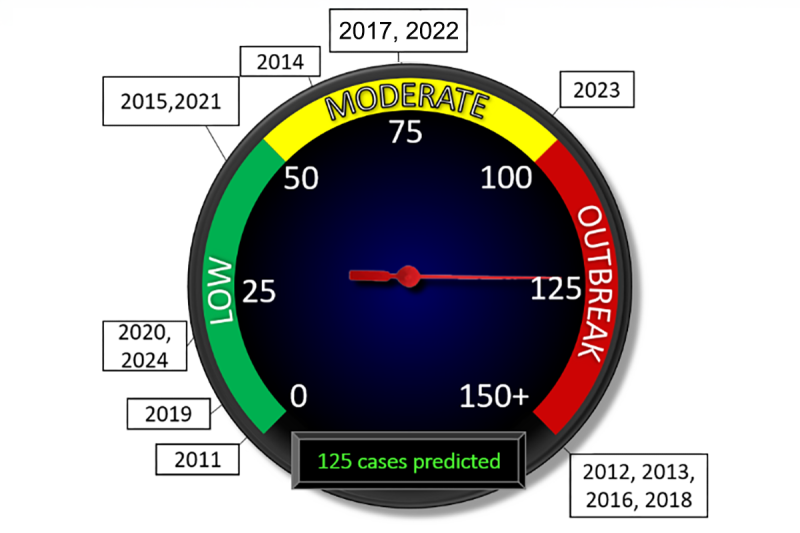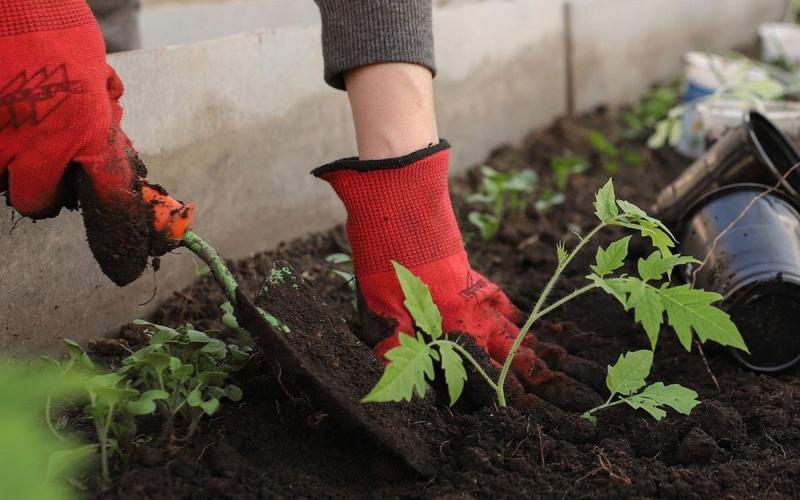
Written collaboratively by Adam Varenhorst, Amanda Bachmann, Stephen Robertson, Philip Rozeboom, Patrick Wagner, and Bradley McManus.
As of September 10, 2025, the South Dakota Department of Health (SD DOH) indicated that West Nile Virus positive mosquito pools have been detected in Beadle, Brookings, Brown, Codington, Hughes, Lincoln, and Minnehaha counties in South Dakota. So far, there have been 59 reported human cases of West Nile virus from Beadle, Bon Homme, Brookings, Brown, Charles Mix, Codington, Corson, Grant, Gregory, Hamlin, Hand, Hughes, Hutchison, Hyde, Lawrence, Lincoln, Marshall, Meade, Miner, Minnehaha, Pennington, Sanborn, Spink, and Walworth counties. The human cases in South Dakota are considered at a moderate level, and the SD DOH is predicting 125 cases for 2025, which would be an outbreak level.
Case numbers are currently moderate and have been steadily increasing each week. It’s important to remember that evening activities should be monitored and an attempt to avoid mosquito bites should be made. There are two mosquito species that account for most of the human bites and the risk associated with contracting the West Nile virus. Another previous article discusses practices that can reduce mosquito bites.
Mosquito populations are higher in South Dakota this year due to ample precipitation that was received throughout much of the state. One step in reducing mosquito populations is to ensure that there is not standing water in old tires, buckets, or anything that can serve as a container. Mosquitos utilize these habitats and removal can help reduce mosquitos.
If you are outside after dark, make sure to cover as much of your skin as possible by wearing long sleeves and pants. We also recommend using insect repellants that contain DEET or similar active ingredients to provide further protection. The U.S. Environmental Protection Agency provides a helpful tool for choosing a repellant that will provide the best protection based on the desired activities.
Mosquitos will continue to be a threat until after one or two hard frosts. Precautions and actions to avoid bites should be continued until that time.


